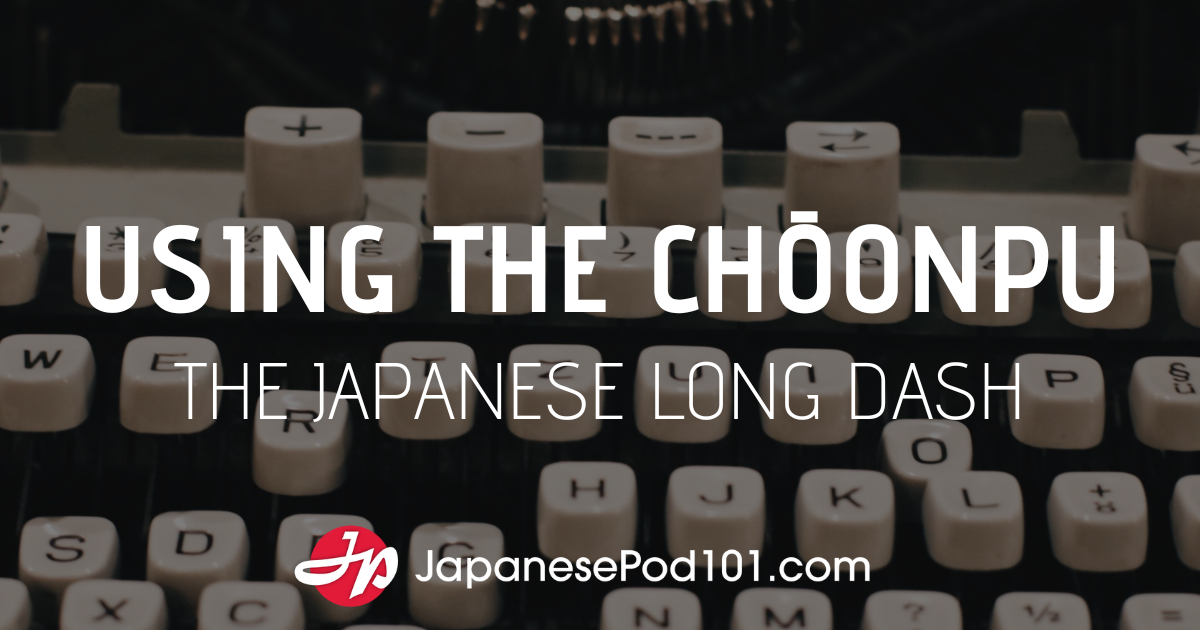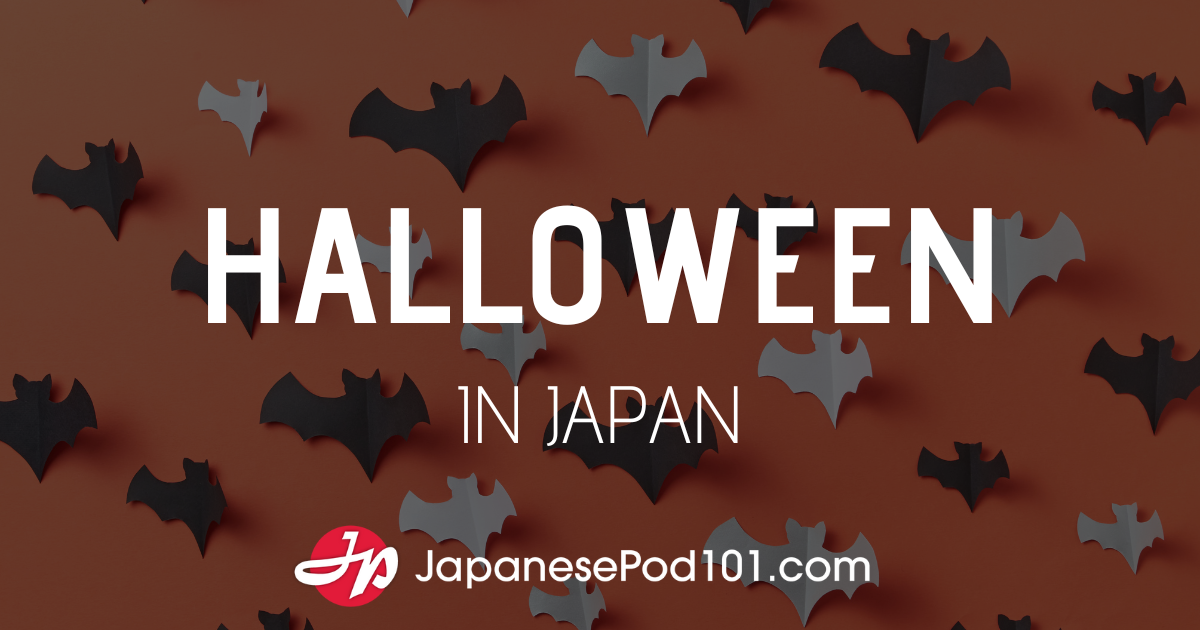November 26, 2009
Advanced Japanese Lesson: ぺこぺこ(pekopeko)
「もう、ぺこぺこだよー」
この台詞は、ある特定の状況を示しているのですが、どんな場面か分かりますか?
「ぺこぺこ」ということばは「擬態語」と呼ばれ、物の様子を表わします。さてこの場合は、空腹であることを示しています。お腹が空いているため普段よりお腹がへこみ、その様子を「ぺこぺこ」と表現するのですね。「ぺこ」は必ず二回繰り返して用いられ、一回だけ「もう、ぺこだよー」とは言いません。
では、次の文章はどんな様子を表わしていると思いますか?
「あいつはぺこぺこしている」
これは盛んに頭を下げて、お辞儀をしている様子を示しています。さらに、礼を繰り返す仕草から、相手の顔色をうかがってその人に気に入られようとこびへつらう様子を表現するときにも使われるようになりました。直立しているときよりも、頭を下げた方が地面からの高さが低くなり、へこんだ状態になります。また、こちらも「ぺこ」単独ではなく、「ぺこぺこ」と繰り返して使います。
「擬態語」は日本語を修得する際に避けて通れない語群で、「ぺこぺこ」のように二回繰り返した形のものが多いです。例えば、「じろじろ」は対象を上から下までよく見ることを表わし、「きらきら」は何かが光り輝く様子であることを表現しています。
発音したときの語感を楽しみながら、覚えて使ってみると日本語での表現がぐっと豊かになりますよ。
======
"Mō pekopeko da yo" or "I'm so pekopeko."
This phrase is uttered in a specific situation, can you guess what?
Pekopeko is a type of mimetic... Show more
November 26, 2009
November Social Networking Contest Winners!
Every month, we are giving away great JapanesePod101.com prizes to 4 lucky listeners. Sign up to follow us on Facebook, Twitter, YouTube or JapanesePod101.com to be eligible to win. Increase your chances of winning by following us on all four sites!Here are November's winners:
Facebook: Jason Horner
Youtube: StylishAssassin
Twitter: ColtonOsborn
JapanesePod101: mieth
See your name here? Email us at contactus@JapanesePod101.com to claim your prize. Check back next month for December's winners!
November 26, 2009
Learn Japanese Kanji – Everyday Kanji (Gas Station)
Hi everyone!
Welcome to Everyday Kanji! In this series, we're going to present pictures of kanji seen in various places in Japan taken by the team members at JapanesePod101.com. That's right - kanji seen and used everyday!
The theme for this week is kanji found at a gas station. Let's take a look!
①
泡洗車 (awa sensha) = bubble car wash
This refers to a car wash. The first kanji is 泡 (awa) and means “bubbles”, and the second word 洗車 (sensha) means “car wash”. 洗車 is made up of the characters for “wash” (洗) and “car” (車).
泡洗車 (awa sensha) = bubble car wash
● 泡 (awa) = bubbles
● 洗車 (sensha) = car wash
● 泡 (awa) = bubbles
洗車 (sensha) = car wash
● 洗 (sen) = wash
● 車 (sha) = car
Sample Sentence:
今日は泡洗車で、愛車を洗う。
... Show more
November 23, 2009
Japanese Holidays: Kinrou kansha no hi ”Labor Thanksgiving Day”
In Japan, November 23rd is a National Holiday called 勤労感謝の日(Kinrou kansha no hi) which means Labor Thanksgiving Day. This holiday was originally a national festival called "Niinamesai" meaning "Harvest Festival." At the festival, the emperor dedicated the year's harvest to the Shinto Gods and ate it to celebrate the harvest of that year.
This holiday is similar to Thanksgiving Day in the United States in both the timing and concept. But, considering that this holiday is held to give thanks to people's hard work in addition to the harvest, it is also similar to "Labor Day" in the US. Both of these holidays are very similar in that they give us a good opportunity to express our thanks to one another.
There isn't a special meal that... Show more
November 20, 2009
Special Delivery: Part 3
Quick Links
Welcome to Kanji Curiosity | The Basics | Glossary
I've discovered two new ways of offending the Japanese:
渡し箸 (watashibashi: resting one's chopsticks across the top of one's bowl) to cross over + chopsticks
渡り箸 (wataribashi: using one's chopsticks to jump from side dish to side dish without pausing to eat rice in between) to cross over + chopsticks
Both actions are considered breaches of etiquette.
Just one hiragana distinguishes one term from the other. (And that hiragana can serve as a memory trick. The し somewhat resembles the top of a bowl, whereas the り looks like upright chopsticks jumping from side dish to side dish and appalling all the Emirii... Show more
November 20, 2009
November 2009 Newsletter
1. Get serious about Japanese with The Ultimate Getting Started Japanese Package - Limited Time Offer! Stop by JapanesePod101.com/ULTIMATE to find out more.
2. Happy Thanksgiving! We want to say "Thank you" for listening to JapanesePod101.com! Use coupon code THANKS09 by November 26th and save 26% off any basic or premium subscription today! Click here to redeem this incredible, limited time offer today!
3. Best Lessons and Blog Entries for November! - Find out what’s popular this month! The blog has some great content for you to see.
Welcome to theJapanesePod101.com newsletter. These periodic newsletters will deliver to you all the exciting developments that are going on at JapanesePod101.com. With each ... Show more
November 19, 2009
Advanced Japanese Lesson: 語呂合わせ(goroawase)
治療の予約をしようと歯科医院の診察券を見たら、電話番号が「37-6480」と書かれていました。これは、日本人にとってはとても覚えやすい数字です。なぜかというと、「みんな、むしばゼロ」と読めるからです。
日本語では数字を「いち、に、さん…」と読むだけでなく、「ひ(ひとつ)、ふ(ふたつ)、み(みっつ)…」とも読みます。これらの読み方を組み合わせて別の意味を生み出し、数字を当てはめて連想しながら覚えると、より一層、強く記憶にとどめることができます。
特に、歴史の年号を覚えるときにはこのような覚え方が威力を発揮します。日本史の年号で最も有名なのは、鎌倉幕府成立の年とされる「1192年」。これは、「いいくに」と読めるため「いいくに 作ろう 鎌倉幕府」と関連付けた文章と共に暗記しやすいからです。
2の平方根√2は1.41421356…ですが、数字の並んでいる通り、左から順番に暗記しようと思っても容易ではありません。しかし、「ひとよ ひとよに ひとみごろ(一夜 一夜に 人 見頃)」と読み換えれば9個の数字を簡単に覚えることができます。
このような読み方を「語呂合わせ」と言います。「語呂」とは、「ことばや文章の続き具合、調子」のことを指し、ことばの続き方を調子よく合わせることで、単なる羅列に過ぎない数字も、おもしろい意味を生み出して覚えたり、宣伝したりすることができるのです。
===
In order to make an appointment at the dentist, I looked at the patient registration card and saw the phone number 37-6480. This number... Show more
November 18, 2009
Learn Japanese Kanji – Everyday Kanji (Operating System)
Hi everyone!
Welcome to Everyday Kanji! In this series, we're going to present pictures of kanji seen in various places in Japan taken by the team members at JapanesePod101.com. That's right - kanji seen and used everyday!
The theme for this week is kanji found in a Japanese-language operating system of a computer. Let's take a look!
①
終了オプション (shūryō opushon) = shut down options
When you’re ready to shut down your computer for the day, this is the button you press to see the different options. We have one word in kanji, 終了 (shūryō), and one word in katakana, オプション. 終了 means “end” or “completion”, and オプション means “options”. So literally this means “completion options”, or “shut down options”. In an English-language OS,... Show more
November 15, 2009
Japanese Culture: 七五三 (seven-five-three)
Shichi-Go-San (七五三 seven-five-three) is a traditional festival day in Japan when parents celebrate the growth of their children and pray for their future and well-being when their daughters turn three or seven and their sons turn three or five.Originally, this event was held on November 15th. However, these days people often celebrate it on the nearest weekend because it is not a national holiday. There are some regions where they don't celebrate sons who turn three years old.
Parents usually dress their daughters in kimono and their sons in hakama, which are formal Japanese skirtlike trousers. They then take them to a shrine or temple to celebrate their growth and pray for their health. They also take family pictures as a keepsake.
... Show more
November 13, 2009
Will We Cross That Bridge When We Come to It? Part 2
Quick Links
Welcome to Kanji Curiosity | The Basics | Glossary
In any society, a bridge is perhaps the most visible symbol of trust. And this kind of trust seldom comes into question. When most of us see a bridge, we assume it can handle the cars, trains, and gale-force winds bearing down on it.
Lately, though, people in my neck of the woods realize that they can't take bridge safety for granted at all. In September, inspectors found a significant crack on the San Francisco Bay Bridge. (They wouldn't have done an inspection except for a rare circumstance, so this discovery shook our confidence considerably.) Crews labored to fix the problem, only to have the repair job fail weeks later, sending 5,000 pounds of steel crashing down... Show more









